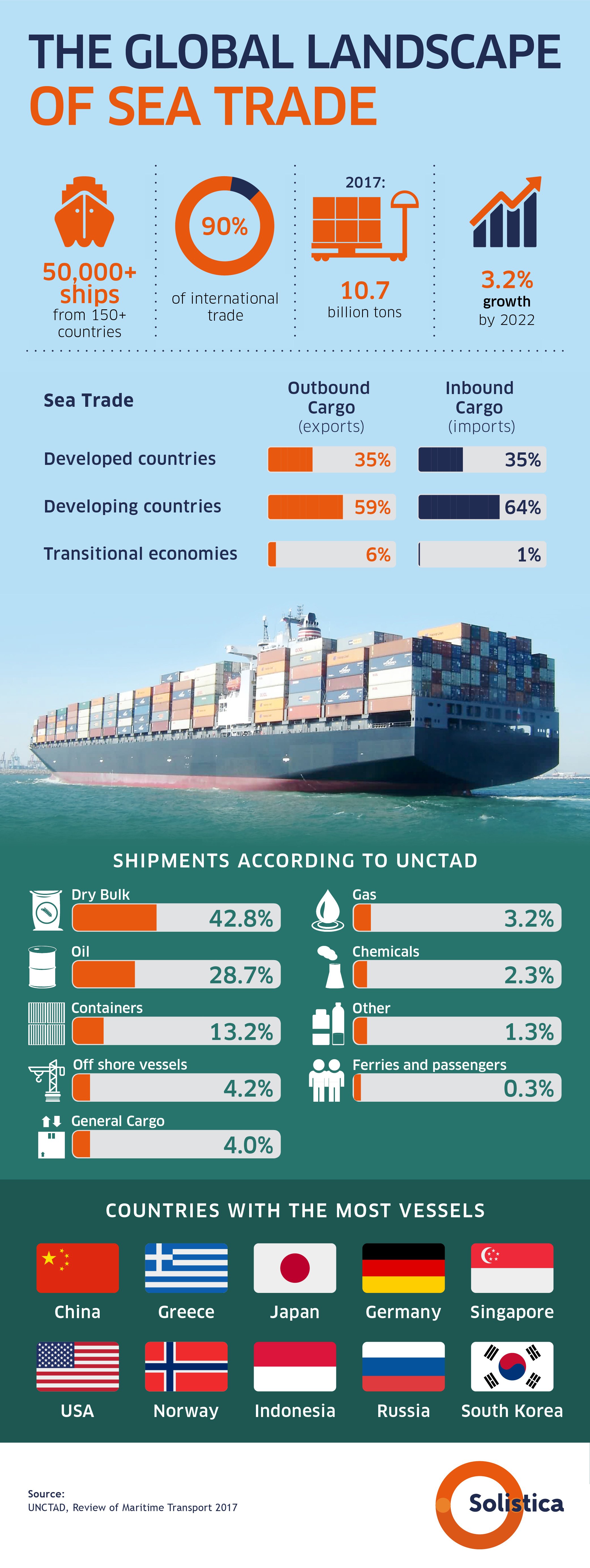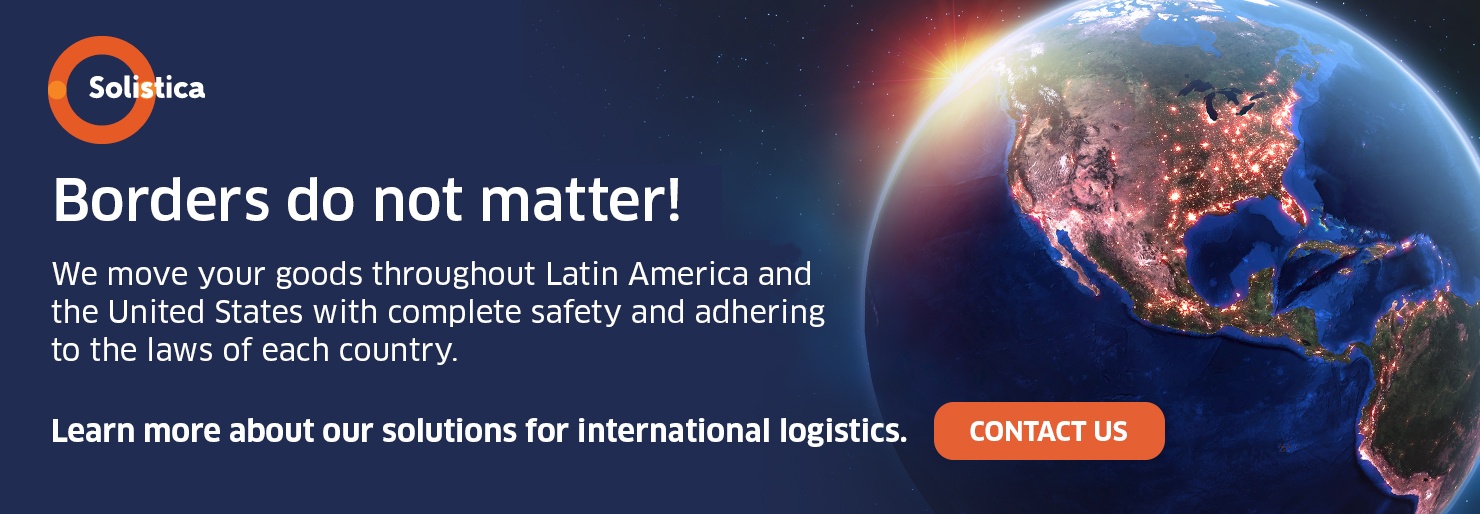The maritime industry has always been considered as a pillar of international trade since the times of ancient civilizations because it makes it possible to buy and sell goods and transport people.
With over 50,000 merchant ships from 150 countries, it is currently one of the most globalized industries in the world in terms of ownership and operations.
-
Maritime Industry
According to the International Maritime Organization (IMO), there are currently more than fifty thousand merchant ships from over 150 countries transporting more than 90% of international trade and, according to the United Nations Conference on Trade and Development (UNCTAD), maritime trade reached 10.7 billion tons in 2017 and is expecting a growth in the order of 3.2% by 2022.
Factors like trade policy and the low prices of commodities and oil have resulted in a growing uncertainty, which has exerted pressure on sea trade.
In terms of the technology used in the sea transport industry, such as the Internet of Things, blockchain, self-piloting ships, and drones, it has brought financial efficiency by optimizing systems and logistics operations and has broaden and helped connectivity. Nevertheless, it has also raised new concerns, such as the threat of cyberattacks, which has forced companies and governments to work together to manage and implement new tools to safely make operations more efficient.
Although some shipping lines are bigger than others, most are partnerships between freighters, representing over 80% of the global market share for container freight.
Notwithstanding the fact that the rise of the world’s fleet has slowed down for the fifth year in a row, the capacity offered grew more than the demand, which led to an excess of the global capacity and a pressure to lower freight rates. This landscape of low demand and excessive capacity has also lowered the profitability of most of the shipping segments.
Sea fleets and cargoes
At the beginning of 2017, the commercial value of the world’s fleet decreased to 820 billion and several countries were benefitted with the construction, ownership, signage, and operation of ships.
In terms of cargo capacity, the five main ship-building countries are Greece, Japan, China, Germany, and Singapore. Together, these countries have 49.5% market share in the deadweight tonnage market. Data from UNCTAD suggests a trend leaning towards the consolidation of the industry where several countries will specialize in diverse sea sub-sectors and more developing countries will increase their participation.
Sea transport fares
In general, freight rates improved in every industry except oil. The cargo index for containers grew and the average surpassed those of 2016. The reason for this was a better balance between the offer and the demand in the container ship market. The container freight industry closed 2017 with $7 billion dollars thanks to the transported volume, freight rates, revenues, and operational management.
As an example, during 2017, the rates for the Shanghai – USA route grew by 17.3% in comparison to 2016 and averaged $2,457 dollars per 40 FEU. For the Shanghai – Northern Europe route, rates were $876 dollars per 20 TEU, or 27% more. The Shanghai – South Africa route averaged $1,155 dollars per TEU, an increase of almost 98% in comparison to 2016. Annual freight rates for the Shanghai – South America route were $2,679 per TEU, or 62.7% more than the average for 2016.
Maritime industry’s staff
This industry employs 1.65 million sailors globally. Even though women occupy 55% of junior positions and 9% of senior positions on land, only 1% of them are part of sea crews.
IMO says that 58% of staff in the world’s fleet is over 55 years old, which makes it increasingly urgent to train young people to replace them by 2030.
In the next years, sea transport will continue being the most important means of transportation for international trade and sea companies, and public organizations across the globe should understand the importance that connectivity has for the development of this sector and of the global economy.
Likewise, companies and governments must come up with policies and plans to adapt to the requirements of sea trade’s electronic models to lower costs and follow the recommendations of the United Nations, the World Trade Organization, and the World Customs Organization.







